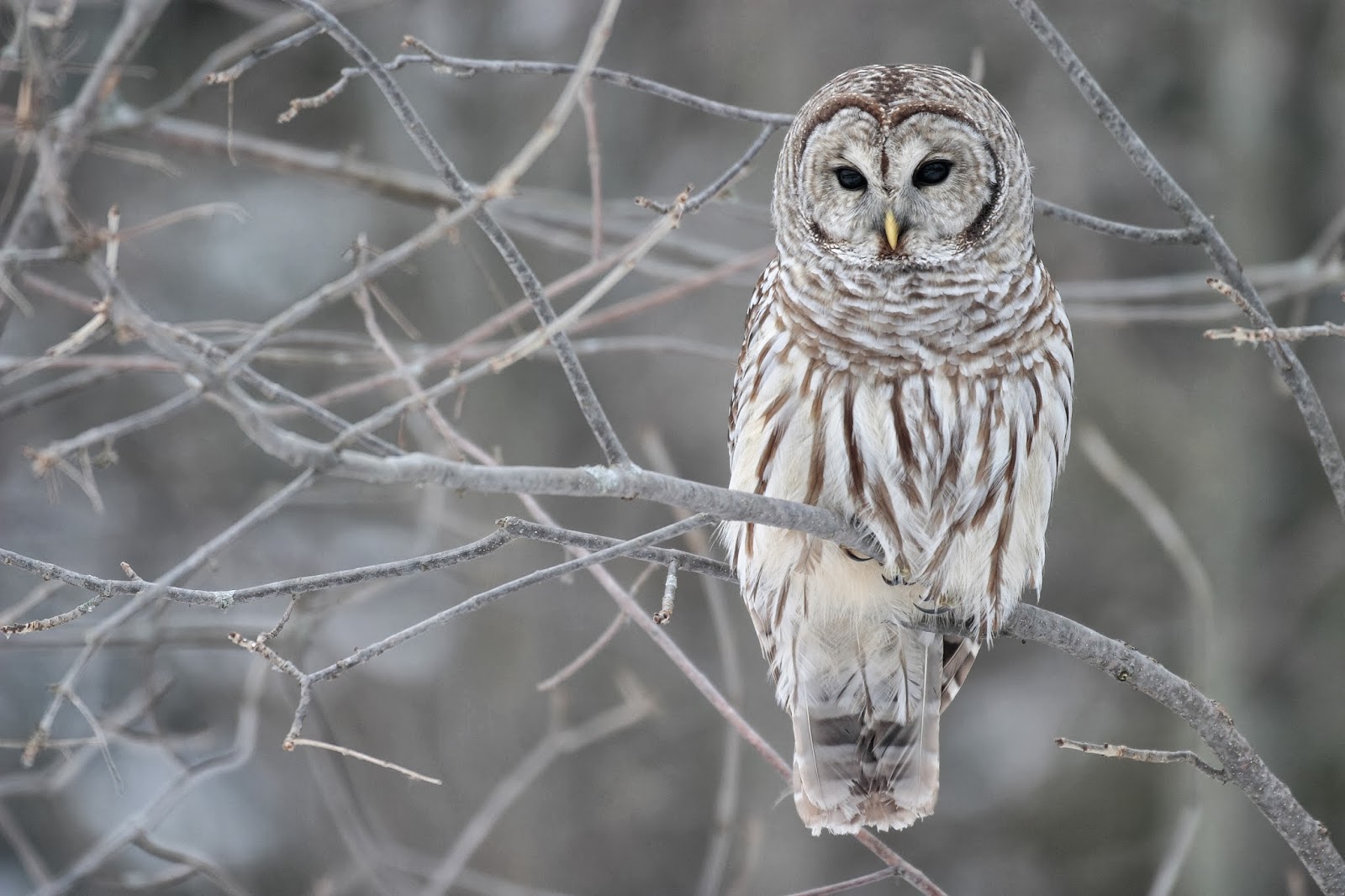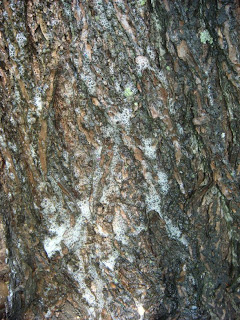Animals in Winter: Barred Owls
 |
| Photo courtesy of Vermont Fish & Wildlife |
Barred owls are grayish-brown with white stripes on their
wings, back, and vertically across their belly. Unlike other owls in
Vermont, they have brown eyes. If you haven't seen a barred owl, there is a
good chance that you’ve heard one. They have many vocalizations including hoots,
grunts, squeaks, and gurgles. Their most recognizable call sounds like, “Who-cooks-for-you? Who-cooks-for-you-all?” Female and male
owls communicate during mating season in late winter by calling and
responding to each other or vocalizing in unison. Owl pairs mate for life and raise their young together. Barred owls are curious, gentle,
and friendly animals that are known to approach humans when they imitate their
calls in the forest.
 |
| Photo courtesy of Vermont Fish & Wildlife |
The habitats of barred owls vary, but they favor mature
deciduous forests near water. They sometimes inhabit spruce-fir forests and
mixed-conifer deciduous forests. The largest population of barred owls lives in
Vermont’s Green Mountains. During the winter, they are often found nesting in lower
canopy of trees, using the thicker vegetation to block the wind.
The population of barred owls in the state is relatively
secure. Their lowest populations were reported during the 19th
century when much of Vermont was deforested for farming. Today, they are most
vulnerable to loss of habitat through the development of the forests where they
live.
If you find yourself trying to spot a snowy owl this winter,
remember to keep your eyes (and ears) open for a barred owl, too!
Listen to owl audio:
For more information about barred owls visit Vermont Fish & Wildlife and The Cornell Lab of Ornithology
Listen to owl audio:
For more information about barred owls visit Vermont Fish & Wildlife and The Cornell Lab of Ornithology

.jpg)
.jpg)
I live in Proctor, Vermont and after years of following the annual Barred Owl cam from Birds Unlimited/Cornell I have been hearing a barred owl call at my in town home. I am so excited. We have many large pine trees which I feel attract many birds, but to hear a barred owl in my area is exciting! What do I do now to learn more? Go out for a night walk and call to it?
ReplyDelete